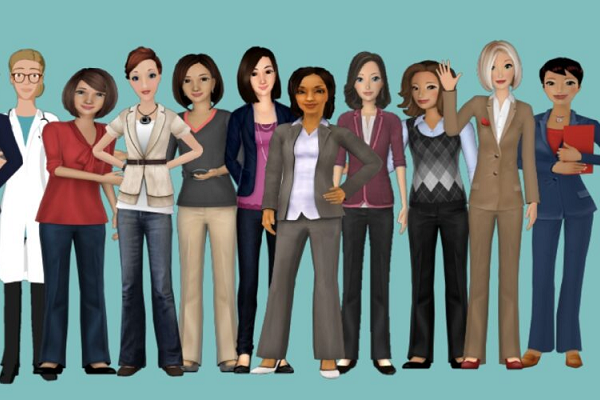Enterprise Virtual Being Startup Codebaby Integrates ChatGPT Into Customer Service Bots
 Customer service virtual being developer CodeBaby has begun augmenting its digital agents with ChatGPT. Codebaby, which refers to its virtual assistants as conversational AI avatars, is employing the generative AI model to handle dialogue with customers as an experiment for now but is planning to employ OpenAI’s models more widely in the future, joining the growing number of enterpise AI service providers jumping into the generative AI boom.
Customer service virtual being developer CodeBaby has begun augmenting its digital agents with ChatGPT. Codebaby, which refers to its virtual assistants as conversational AI avatars, is employing the generative AI model to handle dialogue with customers as an experiment for now but is planning to employ OpenAI’s models more widely in the future, joining the growing number of enterpise AI service providers jumping into the generative AI boom.
Codebaby ChatGPT
To start, Codebaby is employing generative AI on its own website as a demo and an option for its website’s AI assistant. There is no ChatGPT API, but based on the response time for the demo, Codebaby appears to be relaying the query from the user to ChatGPT online, then displaying the answer and employing its text-to-speech service to read the answer out loud. That’s as opposed to services like Merlin referring to using ChatGPT but actually using an API of GPT-3.5, the model OpenAI used as the foundation of ChatGPT.
Beyond the demo page, Codebaby’s interactive helper uses Google Dialogflow as usual, but if users ask a question that Dialogflow doesn’t have an answer for, the bot asks if they want to sign up for the ChatGPT option. The sign-up is to ensure people are aware that the generative AI doesn’t have a perfect record of accuracy and may give the wrong answer. Codebaby was acquired by IDavatars in 2016, which then shut down in 2018. Codebaby relaunched last year with a platform for business to make their own animated avatars. The company quickly jumped on ChatGPT as a potential tool to include when it came out in November.
“Within days of the announcement, our amazing dev team had an avatar using ChatGPT for conversations. Within weeks of that, we had internal tooling to connect it to Google Dialogflow as our default fallback, to create new avatars connected to the technology, and tooling to help us with training data generation and model training,” Codebaby director of marketing and product development Michelle Collins explained in a blog post about the new feature. “We’re also really curious to see the types of interactions people are trying to have with the ChatGPT enabled avatars. Are they just going to use it to try to get around school or municipality restrictions against accessing the ChatGPT software? Or are they truly asking questions that should either be part of our conversational corpus already. Maybe people are just using it to have fun – we’re ok with that, too.”
Enterprise ChatGPT
The explosion of interest in generative AI chatbots following ChatGPT’s debut has quickly attracted many enterprise services eager to employ large language models. For instance, business conversational AI provider LivePerson recently added generative AI to its Conversational Cloud platform, while Gupshup introduced a chatbot builder based on GPT-3 called Auto Bot Builder. The platform applies GPT-3 and fine-tuned proprietary data to produce a conversational AI customized to specific businesses. Unlike ChatGPT, the Auto Bot platform allows for specialized knowledge databases. And Microsoft’s latest multi-billion dollar investment has led to the broader integration of its technology on the Azure platform, as well as its new ChatGPT-powered Bing search engine.
Follow @voicebotaiFollow @erichschwartz
LivePerson Adds ChatGPT’s Generative AI Model to Customer Service Bot Platform
Merlin AI Launches First ChatGPT iOS and Android Mobile App (Updated)
Generative AI Startup Supernormal Raises $10M to Take Meeting Notes With GPT-3








